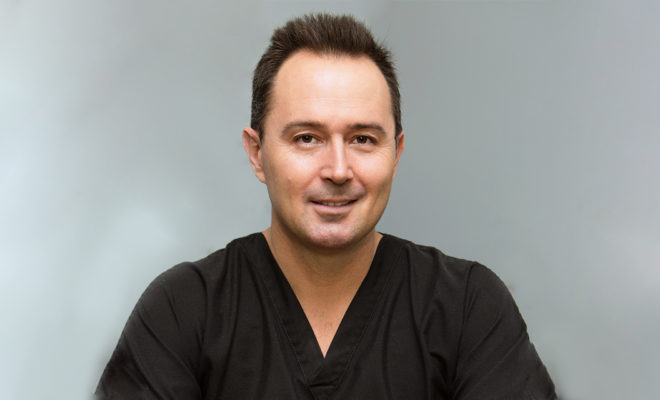
Health & Wellness
InHealth: Varicose Veins and Spider Veins
By Federico Richter, MD
Varicose veins are dilated rope like blood vessels that protrude from the surface of the skin. But did you know that you might have varicose veins and not even know it? This is because many of these abnormal veins lie beneath the surface of the skin and are not visible.
Varicose veins affect more than 25 million people in the United States. Although many patients can be unhappy because of the cosmetic appearance of spider veins and varicose veins, they may in fact have more serious problems like chronic venous insufficiency. It is more likely to be present on patients who have vein related symptoms like heaviness, itching, fatigue, charley horses, leg swelling, cramping, restless leg syndrome and chronic leg pain.
For years, many people have been told by their health care providers that spider veins and varicose veins are purely a cosmetic problem, do not cause problems, and should be largely ignored. Over the past 15 years, advancement in the understanding of venous disease and treatments have spawned a new medical specialty—Phlebology, or the study of venous disorders.
Much of the knowledge developed from the recent interest in vein diseases has not yet reached the majority of health care providers, which may leave the patient with inaccurate or inadequate information. Phlebologists are uniquely qualified to help patients understand the significance of their vein problem and how it can best be treated.
Spider veins can be purely cosmetic, or they may be an indication of something more serious affecting your veins. When spider veins are located on the inside of the knee or the ankle area, the chances are higher of those veins being a medical problem. For patients with spider veins in these locations, a venous reflux ultrasound is always recommended. Veins have on the inside one-way valves that help the deoxygenated blood return back to the heart. When a one-way valve fails, blood goes in the wrong direction (venous reflux) and pools in the veins increasing the pressure inside of the vein and causing dilatation of the vein wall. This pressure is transmitted to the capillaries, which are very tiny vessels that can’t be seen when normal, but they form spider veins when they become dilated due to increased pressure.
Medical Treatments
Endovenous laser ablation: This is a minimally invasive procedure performed in the office. It involves the use of laser heat through a catheter or cannula to heat up and seal the affected veins. Once blood can no longer pass through those veins, less blood pools there. Subsequently, flow is improved as the blood will be rerouted to other healthy/proper functioning veins. Endovenous laser treatment also gets rid of varicose veins and helps to heal venous ulcers. Local anesthesia is used for this procedure.
Radiofrequency ablation: This is highly similar to endovenous laser therapy, with the only difference being that radiofrequency energy is the source of heat instead of lasers.
Ultrasound guided Foam Sclerotherapy: In this procedure, your affected veins will be injected with special chemical solutions. These chemicals will then cause the veins to scar, swell, and close. Blood that previously passed through the veins will be rerouted to other healthy veins, and visible varicose veins disappear or at least fade considerably.
VenaSeal: The new technology available, it is a medical adhesive (super glue). Two other closure techniques are currently in use today but VenaSeal is by far the least invasive. Only one small amount of local anesthetic is needed at the incision site. This means very few needle sticks are involved, which increases comfort and reduces the risk of infection. Bruising is almost nonexistent.
Since VenaSeal doesn’t rely on heat, there’s no risk of thermal injury (burns). There’s also virtually no chance of causing nerve damage, which can occur very rarely with comparable heat-based treatments.
In the majority of cases patients can return to their normal activities immediately, including exercise. It’s also not necessary to wear a compression stocking. In contrast, older techniques typically limit activities for up to two weeks and compression garments are mandatory during this period.



You must be logged in to post a comment Login